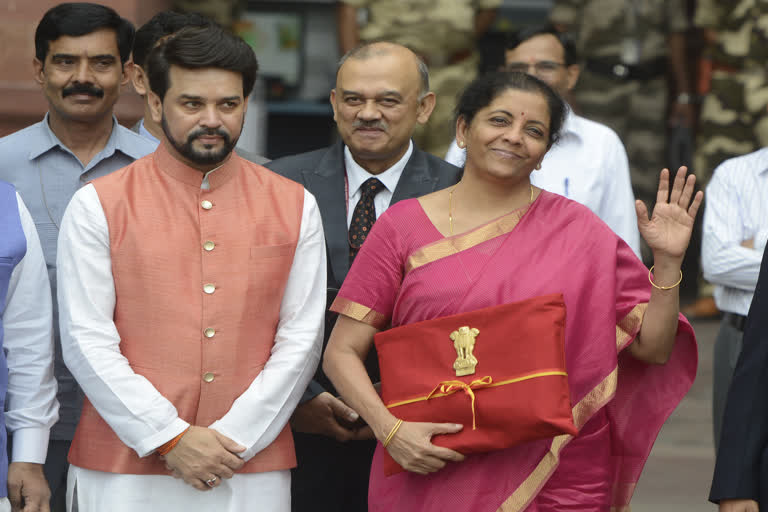Hyderabad:On February 1, Finance Minister Nirmala Sitharaman will present her first full-fledged Budget.
From ‘crorepati’ to common man, from Kashmir to Kanyakumari, the whole country has set its eyes on the Budget Speech with the hope India’s falling fortunes will be revived.
The Indian Economy is growing at its slowest pace in 11 years, unemployment rate is at its highest level in over four decades and food prices touching the roof.
The manufacturing sector that accommodates large chunk of semi-skilled labour force is in doldrums, Agriculture, a crucial sector for rural growth is growing below 3 percent.
Recently released World Economic Outlook, Global Social Mobility Index and Oxfam Report on the sidelines of the World Economic Forum Summit in Davos clearly indicate India’s wealth creation rate is decelerating and concrete steps to be taken to bridge rich-poor divide.
What is the way out?
Higher Government spending could be an optimal solution.
The ongoing economic slowdown appears largely due to the demand side issues rather than the supply-side bottlenecks.
In other words, even when there are enough goods and services available in the market, people’s insufficient purchasing capacity is causing the current slowdown.
In fact, a recent report of the Reserve Bank of India (RBI) also suggested towards declining consumer confidence, business confidence and the capacity utilisation by the factories, which points out towards a deceleration in demand.
Hence, the solution largely lies in reviving much needed demand in the economy.
In 2019, the RBI, which regulates banks in the country, has done its bit by way of reducing key interest rate (Repo Rate) by 135 basis points or 1.35% with the estimation that it will propel credit demand to purchase houses, cars, etc on the back of low-interest rates.
Unfortunately, it did not yield the desired results. Perhaps it may work with a time lag.
Thus it would be prudent at this point of time, to make use of the upcoming Budget to take on the economic slowdown, by boosting sector-specific public investments and expenditure in a time-bound manner.
The Myth of Fiscal Deficit
In simple terms, Fiscal Deficit indicates total borrowing needed by the government in a given financial year. It is the difference between income and expenditure.
There are arguments that more government spending would widen the fiscal deficit and could also cause high price rise, and eventually result in a bigger problem of slowing growth.
